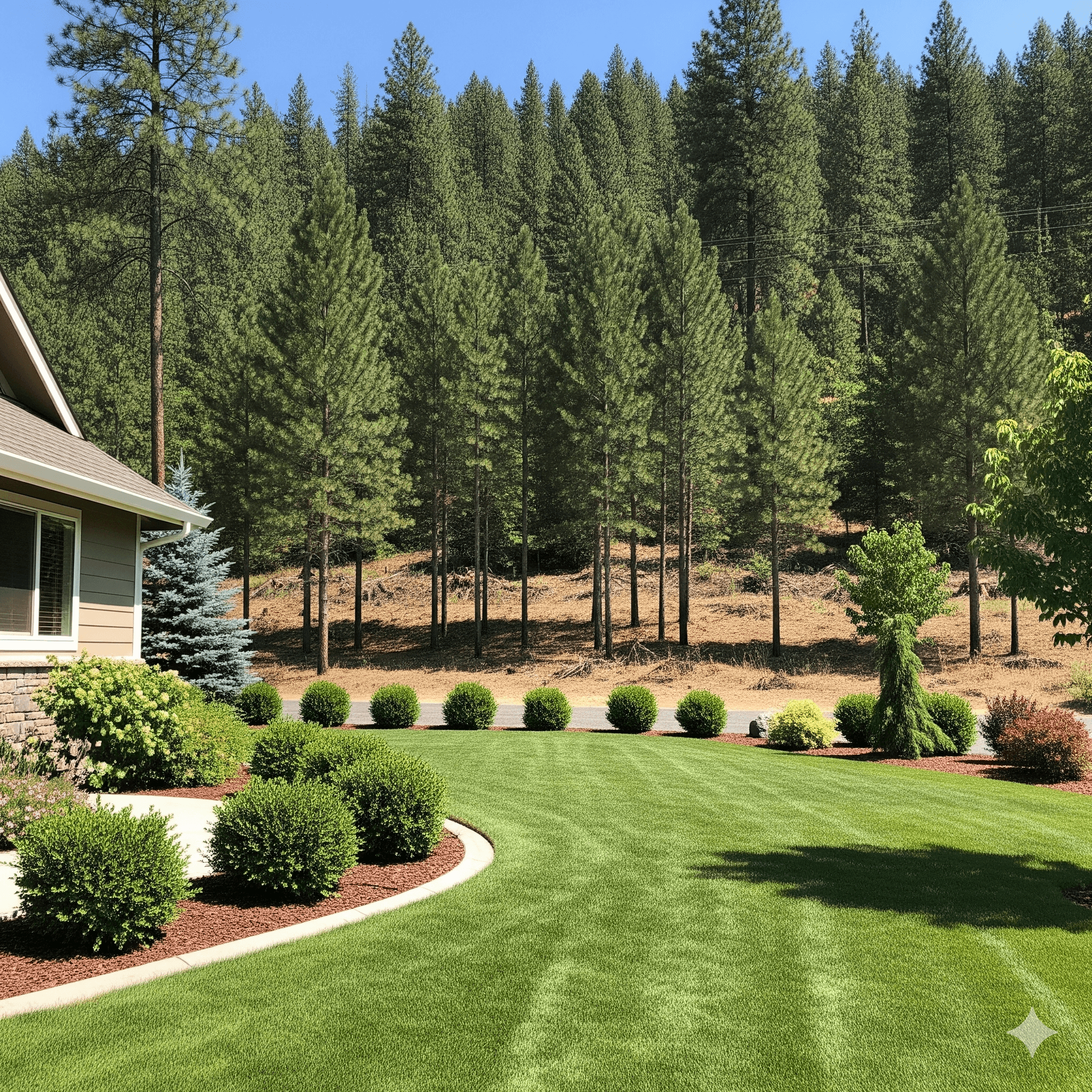
Defensible Space Creation
A structured approach to reducing wildfire ignition pathways around homes and assets.
Why Structured Defensible Space Matters
Wildfire risk in the Inland Northwest continues to evolve with changing fuel moisture patterns, wind events and development pressure at the wildland–urban interface. Defensible space is not about clear-cutting—it is about strategic spacing, ladder fuel interruption, ember exposure reduction and maintaining survivable conditions. Properly implemented zones slow advancing fire, reduce flame lengths and improve the odds of a structure remaining intact.
Gow Forestry evaluates slope (which influences effective zone distances), predominant fuel types, crown spacing, receptive ember beds, vent & deck vulnerabilities, and access corridors for suppression forces. We then deliver a practical, phased prescription you can sustain.
Core Benefits
- Reduces radiant heat & ember ignition pathways
- Improves firefighter access & tactical options
- May support insurance / underwriting discussions
- Enhances landscape structure & long-term resilience
- Integrates with forestry mulching & fuel breaks
Common Ignition Pathways Addressed
- Continuous ladder fuels beneath conifer canopies
- Dense shrub clusters near siding or vents
- Overhanging limbs & crown interlocking
- Heavy duff accumulation in root flares
- Combustible debris & unmanaged wood stacks
Our Process
- Comprehensive ignition vulnerability assessment
- Zone definition adapted to slope & fuels
- Targeted vegetation modification & limb raising
- Fuel bed continuity & ladder interruption
- Debris management & final resilience briefing
Ongoing Maintenance
We recommend light seasonal inspection (spring or early summer) to remove new ladder fuels, address wind-blown debris and maintain spacing efficiency. Our team can schedule recurring trims or provide a self-maintenance guide.
Related Services
Pair defensible space with forestry mulching for broader acreage fuel reduction or lot clearing when preparing for construction and infrastructure improvements.
Frequently Asked Questions
What is defensible space?+
Defensible space is a series of managed zones extending outward from a structure that reduce flame length, radiant heat and ember exposure—improving survivability during a wildfire event.
What zones do you address?+
We address immediate ignition resistance (0–5 ft), intermediate (5–30 ft) and extended (30–100+ ft) zones, adapting distances to slope, fuels and parcel constraints.
How often is maintenance needed?+
Light annual review plus a more thorough treatment every 1–3 years depending on species regrowth, wind deposition and seasonal conditions.
Do you follow standards?+
We align with NFPA and regionally published Firewise & state agency recommendations, tailoring prescriptions to site realities rather than generic templates.
Is tree removal required?+
Often no—strategic limb lifting, spacing adjustments and understory interruption can achieve meaningful risk reduction without over-thinning.
Defensible Space Starts Today
Get a tailored plan to reduce structural ignition risk and improve wildfire resilience.